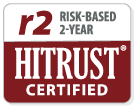The latest in our Voices of Value Guest Blog series features Michael “Mike” J. Jones, Principal and Advisor-InnovateHC.
Physician dissatisfaction, staff dissatisfaction, and low patient satisfaction are interconnected, common themes in healthcare leadership discussions. While the cycle seems to spiral uncontrollably, it is not impossible to manage the processes of healthcare to positively influence outcomes.
Certainly, not all outcomes are positive. Some diseases may only be managed, not cured. Any number of factors impact patient, physician and staff attitudes. It is possible, though, to systematically modify healthcare organizational cultures to reach goals of a performance excellence philosophy.
Step 1: Vision
Begin with understanding the VISION you seek: To maximize success in the ever-evolving healthcare environment through physician alignment and integration.
Patients, physicians, support staff, and governance, leadership and management representatives of healthcare systems are all key stakeholders in reaching this vision. What do patients seek? What do physicians and support staff seek? What do healthcare system Board Members, Managers and Leaders seek? Patients want to receive the best healthcare at an affordable price. Physicians and staff want to efficiently and effectively deliver quality care. Healthcare system board members, leaders and managers want quality outcomes for patients and staff, as measured through financial, clinical and service performance indicators.
So, why is everyone so unhappy with healthcare service performance? Healthcare costs are rising exponentially. Patients contribute more personal income through premiums, co-pays, and out-of-pocket expense than ever before. Physicians feel increased pressure to control costs for diagnostic testing, clinic staffing, and more while regulatory requirements continue to increase the burden of providing care. Healthcare systems are under greater scrutiny because of an overall lack of trust by the public, due in part to issues like the opioid crisis, compensation, regulation, insurance reimbursements, technology, and facility modernization.
Step 2: Performance Excellence
Providing quality healthcare services is not much different than delivering quality in other successful service- or retail-based businesses. Provide high-quality, patient-centered medical services at a reasonable cost while focusing on improved staff satisfaction. That’s the “Quadruple Aim of Healthcare,” achieved through a culture of PERFORMANCE EXCELLENCE. Patients receive a level of care they desire and expect. Physicians and staff give patients the compassionate care they deserve. Healthcare organizations are recognized for increased patient satisfaction and trust, increased community support, improved clinical outcomes and increased financial stability.
To implement a philosophy of performance excellence, healthcare providers adopt a patient-centric focus. For example, in appointment follow-up surveys, one pulmonology practice consistently received low satisfaction marks from patients. After digging into the survey results, one area of dissatisfaction stood out: test result reporting. Patients within the practice were not interested in utilizing a patient portal to seek results and only patients with abnormal results received a report. Patients with “good” or normal results did not receive a report. Needless to say, patients expressed dissatisfaction with results reporting and patients frequently called the office to confirm results. The reality is, patients want to know their test results, good, bad, or otherwise.
Step 3: Communication
The pulmonology practice changed the process of reporting results from only communicating results of concern to communicating ALL results. This saved the doctor and staff time because patients were not contacting them for results. Patients received the feedback they desired through knowing their test results, good or abnormal. The effect on patient satisfaction measurably improved. That one minor process improvement initiative, along with several other improvement efforts, contributed to a mid-sized multispecialty group’s overall patient satisfaction to improve from the 45th percentile to the 92nd percentile in six months.
This seems like a simple and obvious fix, but it required a change in office operations. To make this shift and achieve the desired outcome of improved patient satisfaction ratings, this medical office:
- engaged patients to assess their satisfaction with services,
- collected and analyzed data through post-appointment surveys,
- redesigned a current process directly related to areas for improvement,
- took action and
- achieved results of improved patient satisfaction.
With increased scrutiny healthcare systems cannot become stagnate in managing how they engage key stakeholders and manage processes. Achieving performance excellence requires a culture shift to consistently meet and exceed stakeholder expectations.
Mike Jones is the principal and Advisor for InnovateHC LLC, a healthcare management consulting corporation, specializing in interim leadership and management advisory services. For additional information, Mike may be reached at: [email protected] or www.innovatehc.net).

